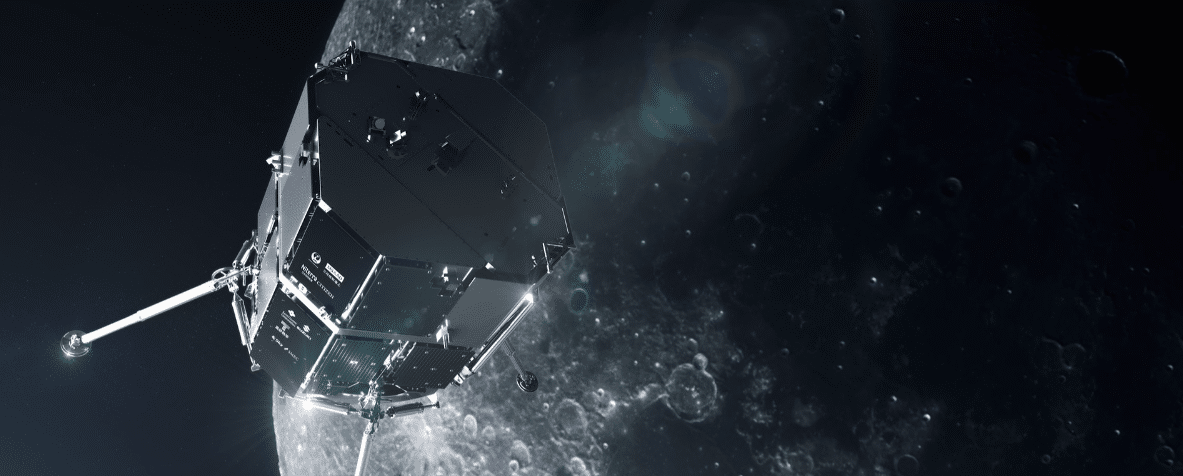On April 25th, ispace (9348.T) nearly succeeded in becoming the first private company to softly land a spacecraft on the moon with its HAKUTO-R lunar lander. However, mission operators lost contact with the 1-ton spacecraft moments before touchdown and HAKUTO-R is assumed to have crashed. Following the apparent failure, ispace’s stock dropped from 1990 JPY ($14.53) to 1590 JPY ($11.93) on the Tokyo Stock Exchange, a 20% decrease from its trading price prior to the landing attempt. However, the stock is still up almost 33% since its IPO about two weeks ago. ispace had been riding a wave of hype associated with their upcoming lunar lander mission and IPO, but we predict this week’s failure will likely result in a gradual decline in its stock price until the next mission starts a new cycle of investor anticipation. All things considered, ispace achieved many successes on its first mission, received widespread media coverage, and collected invaluable data that will hopefully translate to a successful Mission-2 in 2024.
However, this has left the door open for U.S.-based companies Intuitive Machines (LUNR) and Astrobotic to claim the title of first commercial company to successfully land on the moon. Both companies currently expect to launch no earlier than June, but we assess that Intuitive Machines may have a competitive edge. Intuitive Machines is launching on the well-proven SpaceX Falcon 9 while Astrobotic is slated to fly on the inaugural launch of ULA’s Vulcan Centaur, a long-delayed rocket that recently suffered a testing issue with its upperstage. First flight attempts have not ended well this year for launch companies (ABL’s RS1, SpaceX’s Starship, Relativity’s Terran 1, JAXA/MHI’s H3). Although some of these first attempts may have been deemed “partial successes” depending on each company’s minimum objective, none achieved complete mission success. Will Vulcan Centaur be different? Astrobotic and Intuitive Machines face similar in-space hazards and uncertainties, but the additional risk of the inaugural Vulcan Centaur launch leads us to conclude that publicly traded Intuitive Machines is better positioned to have the next shot at putting their lander on the moon first and achieving this historic milestone.
Examining the market reaction, space industry investors may have a herd instinct. ispace’s failed landing seemed to spook investors in Intuitive Machines, whose stock suffered an immediate drop following ispace’s announcement that the landing failed, going from $7.86 to eventually close at $7.25 per share. However, shares in LUNR rebounded dramatically to finally close at $9.59 the following day. Hype may already be shifting to Intuitive Machines, potentially reversing a recent steady decline in their stock price which drove LUNR to close below $10 for the first time on April 21st. The decline may be attributable to ispace drawing market appeal in the days leading up to their landing attempt or perhaps it stemmed from a sell-off opportunity that led to a runaway decline in LUNR. That sell-off opportunity may have been driven by the fact that Space & Technologies Solutions, a joint venture between Intuitive Machines and KBR, won NASA’s OMES III contract, a 5-year base IDIQ contract worth up to $719M. This news temporarily spiked Intuitive Machines’ stock by 24%, from $10.40 at close on April 18th to $12.90 at open on April 19th and presented an opportunity for investors in LUNR to cash in. Whatever the cause, LUNR’s stock price was trending steadily downward toward the rest of the companies we cover in our NewSpace Index (NSI). But with their upcoming lunar landing attempt in the next couple of months, we predict that Intuitive Machines will generate enough positive hope (and hype) to stop that decline …and they may already have. Good luck to all the ex-Google Lunar XPrizers and other commercial space racers still working hard out there. It’s a great time to be watching the moon.
Photo: ispace

